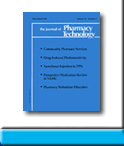 |
 |
Topiramate for Use in Adult Migraine Prophylaxis
Molly R Sinert and Benjamin J Epstein
To request full article click here.
Objective: To review studies comparing topiramate with placebo or other migraine prophylaxis agents in order to outline the role of topiramate in the pharmacologic prevention of adult migraine and to provide clinicians with evidence for rationale of its use.
Data Sources: Primary studies and review articles were identified via a MEDLINE search (1960-November 2008). Search terms included topiramate, antiepileptic, anticonvulsant, migraine prophylaxis, and migraine prevention. Additional references were obtained from bibliographies of those resources.
Study Selection and Data Extraction: All relevant information extracted from randomized, controlled studies and systematic reviews evaluating the efficacy, safety, and pharmacology of topiramate in the prevention of adult migraine were included.
Data Synthesis: Topiramate is approved for the prevention of adult migraine. It has historically been used in the treatment of seizure disorders but received approval for migraine prophylaxis in 2004. The exact mechanism of its antimigraine effect remains unknown, but modulation of sodium channels, γ-aminobutyric acid, and glutamate activity seem to be involved, given the proposed shared pathophysiology between seizure and migraine. Two pivotal trials comparing topiramate with placebo led to approval for migraine prophylaxis in the US and a third similar trial that compared topiramate with propranolol secured licensure in Europe. Additional studies evaluated optimal dosing up to 200 mg daily and duration of therapy through 14 months. These trials demonstrated the ability of topiramate 50 mg twice daily, administered for up to 14 months, to safely reduce migraine frequency, duration, and severity. Limited information from comparative studies suggests a similar effect of topiramate and other agents, including divalproex sodium, propranolol, and timolol. The most common adverse effect observed among all trials was mild-to-moderate paresthesias that were transient in nature. Other adverse effects commonly reported include gastrointestinal upset and cognitive impairment. Adverse effects were more likely to occur during titration periods. Topiramate’s safety profile appears to be as good as or better than that of other prophylactic agents.
CONCLUSIONS: Topiramate is an appropriate first-line drug to consider for prevention of adult migraine. The efficacy and safety of topiramate in migraine prophylaxis has been well established in clinical trials and is comparable with other approved agents for this indication. When choosing among these agents, prescribers should consider the adverse effect profile, route of administration, cost, and comorbidities.
J Pharm Technol 2009;25:100-10.
ACPE Universal Program Number: 407-000-09-052-H01-P (Pharmacists)
To purchase the full CE article click here.
|
|
|
||
|

